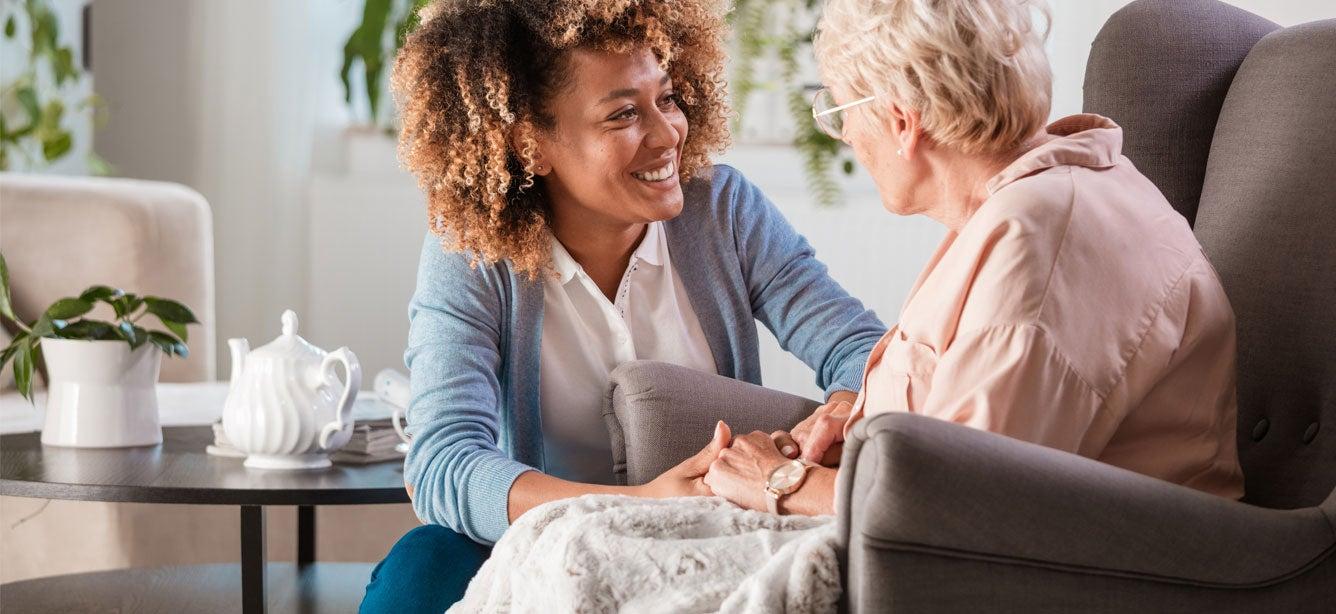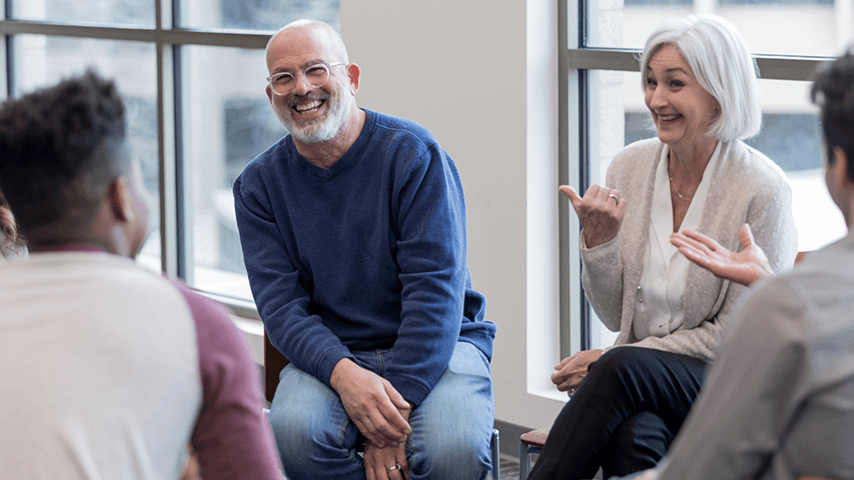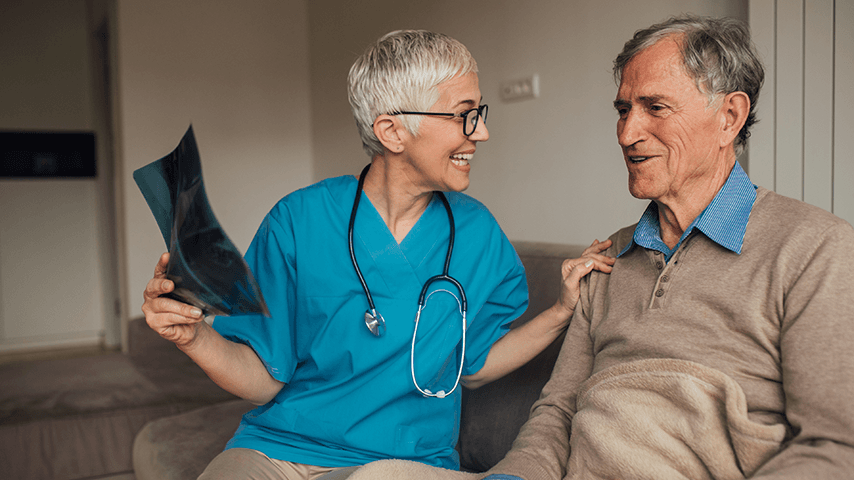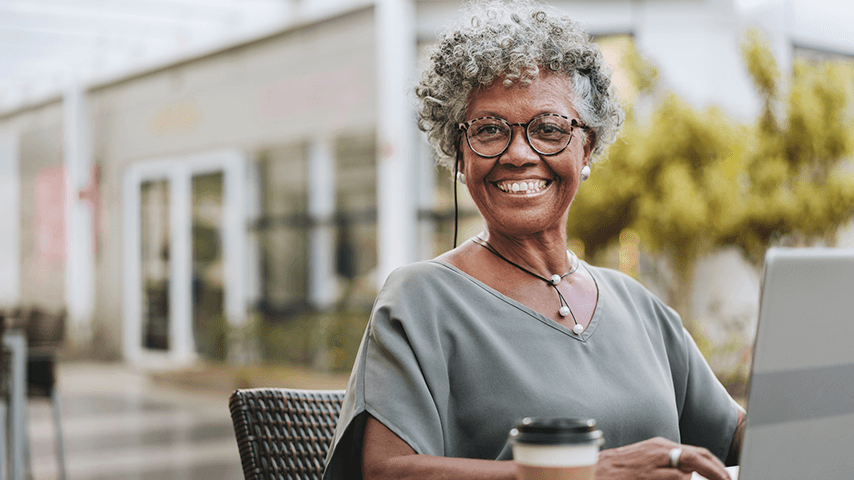
Related Topics
For most of us, virtually everything we do involves seeing, from the moment we wake up until we fall asleep at night.
Imagine feeling safe, confident, and independent your entire life and suddenly facing vision loss that makes everyday activities increasingly difficult, if not impossible. In 2015, an estimated 12.44 million people in the US age 40+ were blind or visually impaired. By 2025, that number is projected to more than double.1
There are many causes of vision loss. For older Americans, vision loss frequently results from medical conditions such as diabetic retinopathy, macular degeneration, glaucoma, cataracts, and more.
Healthy People 2030 identifies vision impairment as a high-priority public health issue. “Eye health and vision care systems will need to consider the increasing number of aging Americans with eye diseases.”2
Vision loss is not an inevitable part of aging
As older adults, we may view vision loss as a natural part of aging. However, most vision loss is the result of a medical condition, and any change to vision warrants a proper eye exam.
When all medical interventions have been exhausted, we may accept low vision as an unavoidable part of life. We may believe there is no way to avoid the dramatic changes blindness or low vision may cause, including job loss, social isolation, anxiety and depression, and greatly diminished safety and independence. Significant vision loss can also make it increasingly difficult to live independently and forces many older adults to move into assisted living facilities earlier than anticipated.
Hope in the form of vision rehabilitation
For those of us facing blindness, low vision, or significant vision loss, vision rehabilitation can provide life-changing benefits.
In other areas of our health, rehabilitation is a natural phase in the continuum of care. If we fracture our leg, after the bone mends, physical rehabilitation can help us regain function and get back on our feet. Although rehabilitation is routinely prescribed for various medical conditions, few are aware of or view vision rehabilitation services in the same way.
Vision rehabilitation is a set of crucial interventions that help individuals with vision impairment achieve maximum levels of safety, independence, function, and quality of life. Vision rehabilitation services vary and are tailored to each individual’s unique goals and needs.
Rehabilitation starts here
“As heartbreaking as it may first feel, there is indeed life after vision loss," said Lee Nasehi, President & CEO of VisionServe Alliance.
Vision rehabilitation can open the door to many new and exciting experiences, in fact, to a whole new world.”
The first step in receiving vision rehabilitation services is an evaluation to assess the level of vision loss and identify areas of difficulty. An eye doctor conducts a comprehensive eye exam (or low vision exam) and can refer patients to a vision rehabilitation agency. A functional assessment is also performed to evaluate functional abilities, identifying the impact on self-care, work, reading, driving, and other daily activities.
A vision rehabilitation specialist uses this information to create a customized vision rehabilitation plan that may include:
- Orientation and mobility training helps individuals with vision loss navigate their environment safely and confidently. Training may include learning how to use a white cane, navigate public transportation, identify landmarks & obstacles, and more.
- Independent living skills training helps us use remaining vision most effectively and develop compensatory strategies for performing daily activities. Training may include using contrast, labeling, specialized training for cooking, cleaning, and much more.
- Assistive technology helps to access information and perform tasks more easily and may include magnifiers, screen readers, speech recognition software, and more.
- Vocational rehabilitation addresses vision-related challenges at work to help maintain an existing position or transition into a new one.
- Adaptive devices and specialized low-vision aids include magnifiers, specialized glasses, talking devices (e.g., clocks), and more.
Other types of compensatory training are also available based on specific goals, needs, and abilities.
How vision rehabilitation can improve quality of life
Vision rehabilitation can provide transformative benefits, including:
- Improved Function: Vision rehabilitation retrains people with vision impairment to perform daily activities with greater ease and independence.
- Increased Safety: Orientation and mobility training teaches us how to navigate safely and confidently at home and elsewhere. This training can also reduce the risk of falls, accidents, and injuries. Home labeling can improve safety related to food storage & preparation, prescription medications, chemicals/cleaning supplies, and more.
- Increased confidence & independence: Vision rehabilitation services also help those with vision impairment maintain the highest levels of freedom and autonomy.
- Improved emotional well-being: Vision loss can be extremely challenging and isolating, increasing anxiety and depression. Vision rehabilitation services can enable us to continue participating in enriching activities and maintain vital social connections to live a rich and rewarding life.
How to access vision rehabilitation services
If you or someone you know is living with vision impairment, vision rehabilitation organizations are located across the country. These organizations are often supported by a state agency that assists people facing blindness and low vision.
Depending on the level of vision loss, vision rehabilitation services may be partially or fully paid for by your state or a local non-profit vision rehabilitation agency.
Please visit VisionAware to learn more about vision rehabilitation services. You can also speak with someone about support by calling the APH hotline at 1-800-232-5463 or email connectcenter@aph.org to locate services and resources in your area. Additionally, more than 125 VisionServe Alliance members provide vision rehabilitation services across the U.S. Access a list of these organizations at https://visionservealliance.org/list-of-members/.
Sources
1. Rohit Varma, et al. Visual Impairment and Blindness in Adults in the United States, Demographic and Geographic Variations from 2015 to 2050. JAMA Ophthalmology. July 2016. Found on the internet at https://jamanetwork.com/journals/jamaophthalmology/article-abstract/2523780
2. Healthy People 2030. Vision Workgroup. Found on the internet at https://health.gov/healthypeople/about/workgroups/vision-workgroup



